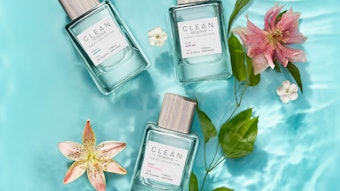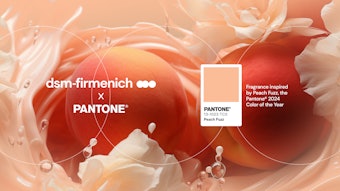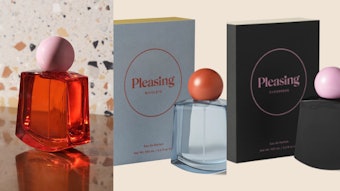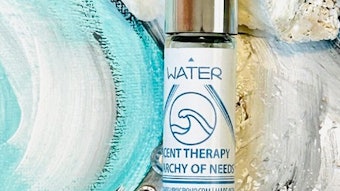Pinpointing what makes a fragrance appealing to an individual is elusive, and lifestyle and broader trends impact preferences and influence fragrance trends. The wafting beauty of floral specialty notes harkens a return to romance and the beauty of the earth, and many new launches are capturing the twists on specialty florals created by new captives and aromatics that are feeding this scent trend. These captives and aromatics are no longer just the singular entity of the flower, and isolated and odor-imparting sections of the flower are recreated to provide a fresh and new lift to floral notes. Can it be that we crave scents that trigger
a connection to nature?
Florals provide that connection along with other specific and deeply seeded messages.
Throughout history, roses have sent messages of elegance and beauty. They have tantalized and seduced, exuded a sense of luxury and lifted our senses as they perfume bath water and provide visual beauty and color. So, it is natural that the rose is a mainstay ingredient of perfumery. The trick is to find new ways to capture the many facets of the scent of roses. There are many olfactive parts to the rose, depending on the nuances given from its growing region, and each imparts a different characteristic. Smell the difference, for example, between the Rose d’Mai from France, a Turkish rose, a Moroccan rose, a Bulgarian rose, the mandarin rose, tea roses—and on and on. Some of the most expensive fragrances in the world built their stories around the richness of Bulgarian rose and jasmine—including Joy and Bal a Versaille. Perfumers are now challenged to tweak our olfactory memories of a time and place of beauty and simplicity.
Sophia Grojssman, one of IFF’s most noted perfumers, remembers the fields of flowers, narcissus and violets particularly, of her youth in Russia. She created many of today’s top fragrances, and her newest—100% Love, launched at Barneys New York—is heavy with roses and other florals but adds a twist of interesting food notes.
In addition, exotic florals seem to be the latest return to romantic nostalgia in a fast-paced world enamored with brashness and instant gratification. Mane USA has long been the premier house from the south of France specializing in the natural floral essences.
“Jungle Essences” are a speciality of Mane USA, which tries to capture the entire essence of the flower using a green solvent portable extraction process. Patti Allyn, head of evaluation and creative services for the company, cites the Tiare flower from Tahiti and how it has built that story into Origins’ Shedonism fragrance line. Vera Wang’s innovative Princess also uses the Tiare flower to tell its story, and is getting rave reviews.
The return of the iris note imparts great richness, warmth and luxury in its olfactory message—as demonstrated in the new Prada fragrance Infusion d’Iris and its orris butter concrete. Chanel 19, an all-time classic, uses the orris along with violet, mimosa and ylang-ylang. Beautiful by Estée Lauder, a long time bestseller, followed suit using these notes, and Mil by Jean Patou was rich in orris and touted as the most expensive fragrance in the world. And the recent launches of Iris Poudre by Frederick Malle, Hermès’ Hiris and Bulgari’s Iris continue the iris tradition.
Tanya Petrakov, chief perfumer at Elias Fragrances, remembers the beautiful smells of muguet d’ bois from her native Russia, and notes that a complex from the various lily notes is needed to duplicate the smell of the fields. “We remember this delicate clean and wonderful scent, and must recreate this from isolated specialties because we cannot extract the lily fragrance from the flower. Coty’s Muguet des Bois was the grandfather of this category,” she said.
This delicate lily note followed in Christian Dior’s Diorissimo, Jessica McClintock and Vera Wang’s original fragrance—and is represented in the new Gwen Stefani fragrance, the relaunch of Givenchy’s Le De and the newest Kate Moss fragrance, which blends musks with floral notes to create a very delicate and long-lasting skin aura.
Perfumers have long tapped nature for its scents, and the search for new twists and notes recreated from the infinitesimal possibilities of the chemicals in nature will broaden the spectrum of fragrance. It is the perfumer’s imagination that melds the palette of nature into new dimensions. The challenge to these noses is to find new combinations of glamorous and luxurious flowers to titillate the senses.
Back to the February issue.










